第69章 CHAPTER XIV THE BLUEBOTTLE: THE LAYING(2)
The fly is soon there. She inspects the linnet from end to end;with her front tarsi she fumbles at the breast and belly. It is a sort of auscultation by sense of touch. The insect becomes aware of what is under the feathers by the manner in which these react.
If scent comes to her assistance, it can only be very slightly, for the game is not yet high. The wound is soon found. No drop of blood is near it, for it is closed by a plug of down rammed into it by the shot. The fly takes up her position without separating the feathers or uncovering the wound. She remains here for two hours without stirring, motionless, with her abdomen concealed beneath the plumage. My eager curiosity does not distract her from her business for a moment.
When she has finished, I take her place. There is nothing either on the skin or at the mouth of the wound. I have to withdraw the downy plug and dig to some depth before discovering the eggs. The ovipositor has therefore lengthened its extensible tube and pushed beyond the feather stopper driven in by the lead. The eggs are in one packet; they number about three hundred.
When the beak and eyes are rendered inaccessible, when the body, moreover, has no wounds, the laying still takes place, but, this time, in a hesitating and niggardly fashion. I pluck the bird completely, the better to watch what happens; also, I cover the head with a paper hood to close the usual means of access. For a long time, with jerky steps, the mother explores the body in every direction; she takes her stand by preference on the head, which she sounds by tapping on it with her front tarsi. She knows that the openings which she needs are there, under the paper; but she also knows how frail are her grubs, how powerless to pierce their way through the strange obstacle which stops her as well and interferes with the work of her ovipositor. The cowl inspires her with profound distrust. Despite the tempting bait of the veiled head, not an egg is laid on the wrapper, slight though it may be.
Weary of vain attempts to compass this obstacle, the Fly at last decides in favor of other points, but not on the breast, belly or back, where the hide would seem too tough and the light too intrusive. She needs dark hiding places, corners where the skin is very delicate. The spots chosen are the cavity of the axilla, corresponding with our armpit, and the crease where the thigh joins the belly. Eggs are laid in both places, but not many, showing that the groin and the axilla are adopted only reluctantly and for lack of a better spot.
With an unplucked bird, also hooded, the same experiment failed: the feathers prevent the fly from slipping into those deep places.
Let us add, in conclusion, that, on a skinned bird, or simply on a piece of butcher's meat, the laying is effected on any part whatever, provided that it be dark. The gloomiest corners are the favorite ones.
It follows from all this that, to lay the eggs, the Bluebottle picks out either naked wounds or else the mucous membranes of the mouth or eyes, which are not protected by a skin of any thickness.
She also needs darkness. We shall see the reasons for her preference later on.
The perfect efficiency of the paper bag, which prevents the inroads of the worms through the eye sockets or the beak, suggests a similar experiment with the whole bird. It is a matter of wrapping the body in a sort of artificial skin which will be as discouraging to the fly as the natural skin. Linnets, some with deep wounds, others almost intact, are placed one by one in paper envelopes similar to those in which the nursery gardener keeps his seeds, envelopes just folded, without being stuck. The paper is quite ordinary and of average thickness. Torn pieces of newspaper serve the purpose.
These sheaths with the corpses inside them are freely exposed to the air, on the table in my study, where they are visited, according to the time of day, in dense shade and in bright sunlight. Attracted by the effluvia from the dead meat, the bluebottles haunt my laboratory, the windows of which are always open. I see them daily alighting on the envelopes and very busily exploring them, apprised of the contents by the gamy smell. Their incessant coming and going is a sign of intense cupidity; and yet none of them decides to lay on the bags. They do not even attempt to slide their ovipositor through the slits of the folds. The favorable season passes and not an egg is laid on the tempting wrappers. All the mothers abstain, judging the slender obstacle of the paper to be more than the vermin will be able to overcome.
This caution on the fly's part does not at all surprise me: motherhood everywhere has gleams of great perspicacity. What does astonish me is the following result. The parcels containing the linnets are left for a whole year uncovered on the table; they remain there for a second year and a third. I inspect the contents from time to time. The little birds are intact, with unrumpled feathers, free from smell, dry and light, like mummies. They have become not decomposed, but mummified.
I expected to see them putrefying, running into sanies, like corpses left to rot in the open air. On the contrary, the birds have dried and hardened, without undergoing any change. What did they want for their putrefaction? Simply the intervention of the fly. The maggot, therefore, is the primary cause of dissolution after death; it is, above all, the putrefactive chemist.